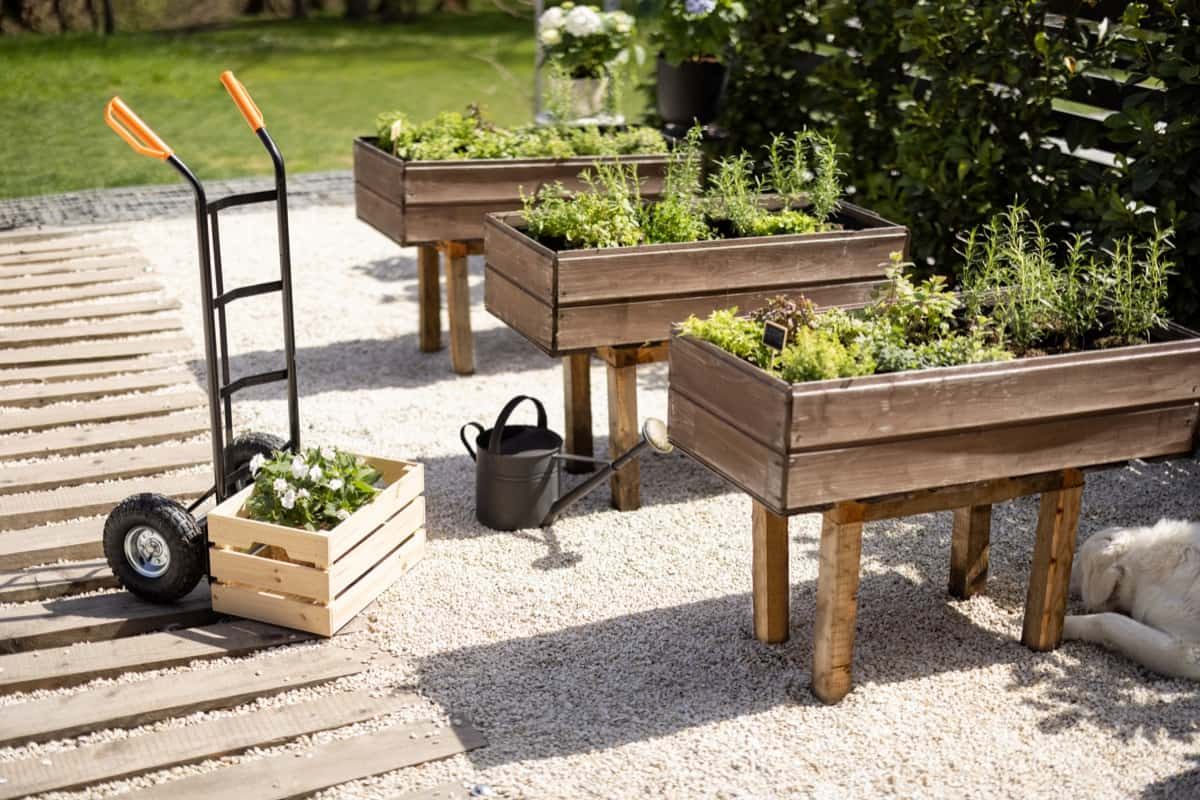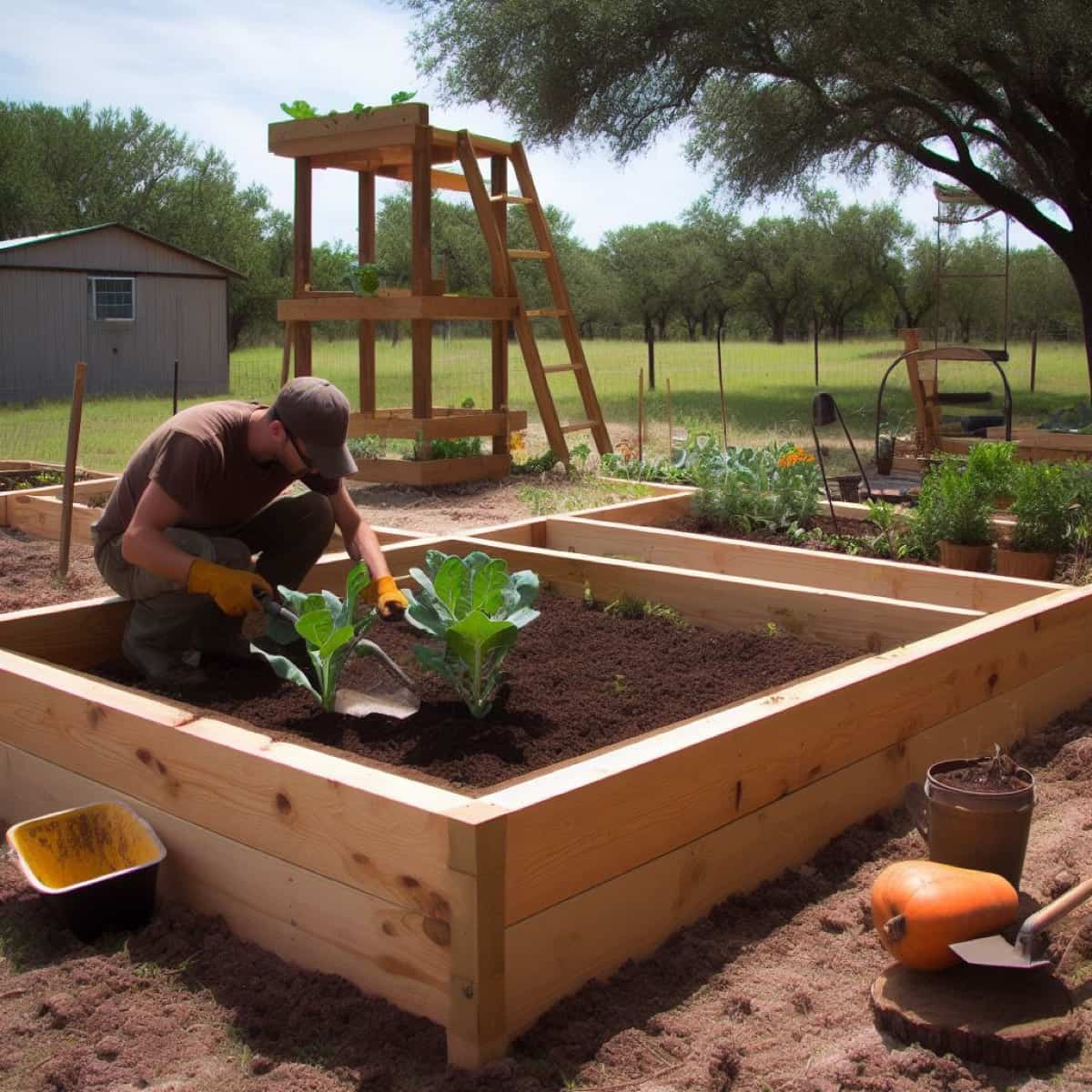Building a raised garden bed for under $100 has become an attractive proposition for many gardening enthusiasts. Not only does it offer a structured space for plants, but it’s also a way of bypassing problematic native soil. Building a low-budget raised garden bed can be rewarding whether you’re a seasoned gardener or a beginner.

This guide will introduce you to creative ways to build a cheap raised garden bed, tips for saving money on your DIY raised garden bed project, and a guide to building an affordable raised garden bed. As you venture into this project, you’ll discover that there are inexpensive materials for building a raised garden bed. By following the steps below, you’ll end up with a budget-friendly raised garden bed construction that is both functional and aesthetically pleasing.
How to Build a Raised Garden Bed for Under $100
Choosing the Right Location for Your Raised Garden Bed
Before diving into the construction part, selecting an appropriate location is crucial. Your plants will need at least six to eight hours of sunlight daily. The spot should have good drainage to prevent soggy conditions. Keep in mind, plants react to their surroundings, and a strong beginning can determine if your garden does well or has problems. Always consider proximity to a water source for easy watering and maintenance. Remember, ensuring the right location is the foundation of your low-cost raised garden bed plans under $100.
Materials Needed for Building a Raised Garden Bed
Once you’ve picked a location, gather your materials. To stick to our DIY raised garden bed under $100, we’ll focus on affordable raised garden bed ideas under $100. While various materials are available, we’ll delve into a few popular budget-friendly and durable options. The common materials include wood, cinder blocks, and recycled items. For added protection, you may want a weed barrier fabric to lay at the base, which can help prevent weed growth and deter pests.
Option 1: Using Recycled Materials for Your Raised Garden Bed
One of the most creative ways to build a cheap raised garden bed is using recycled materials. Old wooden pallets, for instance, can be taken apart and used as boards for the sides. You can use old bricks or stones you find on your property to make a strong border by stacking them. These recycled materials save money and give your garden bed a unique, rustic look. This method truly embodies the spirit of a budget-friendly raised garden bed construction.
Option 2: Using Affordable Wood for Your Raised Garden Bed
Wood is a classic choice for garden beds, and affordable options are available. When on a tight budget, consider options like pine or fir. These might not last as long as cedar or redwood but will serve you for many years if treated correctly. When building a raised garden bed for under $100 with wood, avoid treated lumbers that may contain chemicals harmful to plants. To extend the life of your wooden bed, you can paint or stain it using non-toxic products.
In case you missed it: How to Build a Raised Garden Bed With Recycled Materials in 7 Easy Steps

Option 3: Constructing a Raised Garden Bed with Cinder Blocks
Cinder blocks are a robust and affordable choice for those wanting to build a raised garden bed for under $100. They’re durable, pest-resistant, and can be arranged in various configurations. Building with cinder blocks is relatively straightforward. Simply lay them out in your desired shape, ensure they’re level, and fill the inside with soil. The hollow sections of the blocks can be used for planting herbs or smaller plants. This method is cost-effective and adds a modern touch to your garden space.
Option 4: Creating a Raised Garden Bed with Pallets
Pallets have become popular in DIY projects, and their use in constructing raised garden beds is no exception. To create a raised garden bed using pallets, first, source pallets that haven’t been treated with harmful chemicals. Many businesses often give away pallets for free, making this a budget-friendly option. Once you have your pallets, dismantle them, carefully removing any nails or staples. The planks can then be arranged to form the sides of your garden bed. Depending on your desired height, you might need more than one pallet.
Once constructed, ensure that there are no protruding nails or sharp edges that might be hazardous. Fill the pallet frame with compost, soil, and other organic matter to give your plants a nutritious base. The rustic look of the pallet wood can add charm to your garden, making it a favorite for many DIY enthusiasts.
Option 5: Building a Raised Garden Bed with Straw Bales
Straw bales are another innovative and affordable method for raising garden beds. First, purchase or source straw bales from local farms or gardening centers. Place the bales in your desired shape, whether rectangular, square, or circular. The bales themselves serve as the walls of the bed, so there’s no need for additional materials.
Before adding soil, it’s recommended to condition the straw bales. This means adding water and a nitrogen source to begin breaking things down, and it usually takes about 12 days. Once conditioned, add your soil mix atop the bales and start planting. Straw bales provide excellent aeration and drainage, making them an excellent medium for plant growth. As they decompose over time, they add nutrients back into the soil.
Option 6: Constructing a Raised Garden Bed with Bricks
Bricks are a durable and aesthetic choice for creating raised garden beds. They are particularly useful for a more permanent and refined look. To start, outline the shape of your garden bed with a layer of bricks. Using a level, ensure that the bricks are even to avoid tilting. Depending on your desired height, you can add more layers.
In case you missed it: Raised Bed Plant Spacing: Calculation and Chart for Vegetables

To keep the bricks in place, you can use mortar, although this step is optional as the weight and arrangement of the bricks can often be enough to hold them together. Once your brick walls are in place, fill the enclosure with a quality soil mixture. The bricks make a strong building and soak up heat during the day, then give it off at night, which helps plants grow.
Option 7: Using Fabric Containers as an Alternative to Traditional Raised Beds
Fabric containers, also known as grow bags, offer a unique alternative to conventional raised garden beds. These containers are made of breathable fabric, which promotes excellent root health by preventing root circling and allowing for better air penetration. They come in various sizes, from small ones for individual plants to large ones that accommodate a full garden bed’s worth of crops. To use fabric containers, place them in your desired location and fill them with soil.
Their portability means you can move them around based on the sun’s position or even bring them indoors during harsh weather. They’re perfect for those with limited space or wanting to experiment with their garden layout. When the growing season is over, you can empty the soil, clean the bags, and store them for future use.
Build a Raised Garden Bed for Under $100: Cost Components
| Component | Description | Estimated Cost |
| Lumber/Pallets/Bricks/Cinder Blocks | Material for the bed’s walls. Price varies based on the chosen material. | $30 – $50 |
| Soil & Compost Mix | Quality mix for plant growth. | $20 – $30 |
| Weed Barrier Fabric | To prevent weed growth from below the bed. | $10 – $15 |
| Hardware (screws, brackets) | Needed if using wood or requiring additional stability. | $5 – $10 |
| Optional: Non-toxic Paint/Stain | For added durability and aesthetics, especially for wooden beds. | $5 – $15 |
| Optional: Tools (if purchasing) | Basic tools like a saw, hammer, or drill if not already owned. | $0 – $20* |
In case you missed it: 10 Best Automatic Watering Systems for Balcony, Greenhouse, and Raised Beds

Conclusion
Building a raised garden bed for under $100 is achievable and rewarding, offering an affordable way to enhance your gardening space while ensuring optimal plant growth.
- Feed Your Flock for Less: Top 10 Tips to Save on Chicken Feed
- Ultimate Guide to Ossabaw Island Hog: Breeding, Raising, Diet, and Care
- Hatching Answers: The Top 10 Reasons Your Chickens Aren’t Laying Eggs
- Eggs and Economics: Breaking Down the Cost of Raising Backyard Chickens
- Defend Your Greens: Proven Methods to Keep Iguanas Out of Your Garden
- Ultimate Guide to Cinnamon Queen Chicken: A Comprehensive Guide for Beginners
- Ultimate Guide to California Tan Chicken: Breeding, Raising, Diet, Egg-Production and Care
- Ultimate Guide to Marsh Daisy Chicken: Breeding, Raising, Diet, and Care
- 10 Types of Chicken Farming Businesses You Can Start for Profits